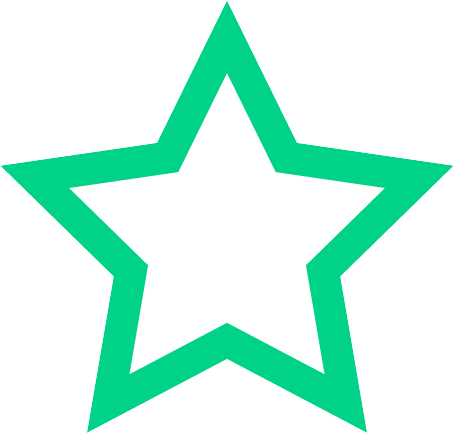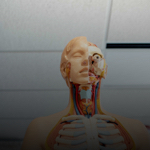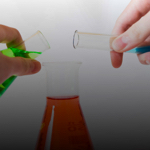Section 1
Preview this deck
Brainstem
Front
Active users
9
All-time users
10
Favorites
0
Last updated
6 years ago
Date created
Mar 14, 2020
Cards (78)
Section 1
(50 cards)
Brainstem
the oldest part and central core of the brain, beginning where the spinal cord swells as it enters the skull; the brainstem is responsible for automatic survival functions
PNS (peripheral nervous system)
the sensory and motor neurons that connect the CNS to the rest of the body
skull
protects the brain
left and right brain
- Left: greater relative dominance in logical reasoning, symbolic analysis, language processing, and step by step sequential reasoning - Right: greater relative dominance in emotion analysis, creativity, intuition, and spatial reasoning
Sulci (sulcus)
shallow grooves
intermediate mass of thalamus
Identify A: Gray matter bridge which connects the R and L Thalamic nuclei
optic chiasm
the point in the brain where the visual field information from each eye "crosses over" to the appropriate side of the brain for processing
mamillary bodies
Process olfactory sensations and reflex movements associated with eating, licking, chewing and swallowing.
Cerebrum
Area of the brain responsible for all voluntary activities of the body, largest part of the brain. (visual-spatial skills, intuition, emotion, artistic skills)
Diencephalon
thalamus and hypothalamus
somatic sensory
receives sensory information from skin, fascia, joints, skeletal muscles, special senses
Thalamus
the brain's sensory switchboard, located on top of the brainstem; it directs messages to the sensory receiving areas in the cortex and transmits replies to the cerebellum and medulla
frontal lobe
A region of the cerebral cortex that has specialized areas for movement, abstract thinking, planning, memory, and judgement
Hypothalamus
A neural structure lying below the thalamus; it directs several maintenance activities (eating, drinking, body temperature), helps govern the endocrine system via the pituitary gland, and is linked to emotion and reward.
gray matter
cell bodies and unmyelinated fibers
basal ganglia
structures in the forebrain that help to control movement
Cerebellum
A large structure of the hindbrain that controls fine motor skills.
motor cortex
an area at the rear of the frontal lobes that controls voluntary movements
brain stem
Connection to spinal cord. Filters information flow between peripheral nervous system and the rest of the brain.
white matter
myelinated axons
Gyri (gyrus)
Large folds of tissue covering the surface of the cerebrum
Epithalamus
Contains pineal body. Involved in olfactory senses and sleep/wake cycle
basal nuclei (ganglia)
Controls muscle activity and posture; largely inhibits unintentional movement when at rest
medulla oblongata
Part of the brainstem that controls vital life-sustaining functions such as heartbeat, breathing, blood pressure, and digestion.
parietal lobe
A region of the cerebral cortex whose functions include processing information about touch.
Meninges
3 protective membranes that surround the brain and spinal cord
cerebrospinal fluid (CSF)
plasma-like clear fluid circulating in and around the brain and spinal cord
occipital lobe
A region of the cerebral cortex that processes visual information
corpora quadrigemina
located in the midbrain; contains reflex centers for vision and auditory reflexes.
cerebral aqueduct
connects the third and fourth ventricles
corpus callosum
the large band of neural fibers connecting the two brain hemispheres and carrying messages between them
Lobes of the brain
frontal, parietal, occipital, temporal
cerebral cortex
The intricate fabric of interconnected neural cells covering the cerebral hemispheres; the body's ultimate control and information-processing center.
Amygdala
two lima bean-sized neural clusters in the limbic system; linked to emotion.
visceral control center
hypothalamus
temporal lobe
A region of the cerebral cortex responsible for hearing and language.
pineal body (gland)
a pea-sized conical mass of tissue behind the third ventricle of the brain, secreting a hormone like substance in some mammals.
superior colliculus
receives visual sensory input
CNS (central nervous system)
consists of the brain and spinal cord
cerebral peduncles (midbrain)
motor tracts on the anterolateral surfaces of midbrain.carry voluntary motor commands from primary motor cortex of each hemisphere and is final destination of the superior cerebellar peduncles.
ventricles of the brain
Canals in the brain that contain cerebrospinal fluid. Ventricles are also found in the heart. They are the two lower chambers of the heart.
sensory homunculus
Demonstrates that the area of the cortex dedicated to the sensations of various body parts is proportional to how sensitive that part of the body is.
Blood Brain Barrier (BBB)
Cellular structure prevents bacteria and large molecules from entering brain. Water, Oxygen, CO2, Glucose, Alcohol and sometimes viruses get through.
midbrain (mesencephalon)
part of the brainstem that connects the brainstem to the cerebellum; controls sensory processes
Pons
A brain structure that relays information from the cerebellum to the rest of the brain
pituitary gland
The endocrine system's most influential gland. Under the influence of the hypothalamus, the pituitary regulates growth and controls other endocrine glands.
Hippocampus
A neural center located in the limbic system that helps process explicit memories for storage.
Brocca's area
speech production
inferior colliculi
protrusions on top of the midbrain; part of the auditory system
limbic system
A doughnut-shaped system of neural structures at the border of the brainstem and cerebral hemispheres; associated with emotions such as fear and aggression and drives such as those for food and sex. Includes the hippocampus, amygdala, and hypothalamus.
Section 2
(28 cards)



